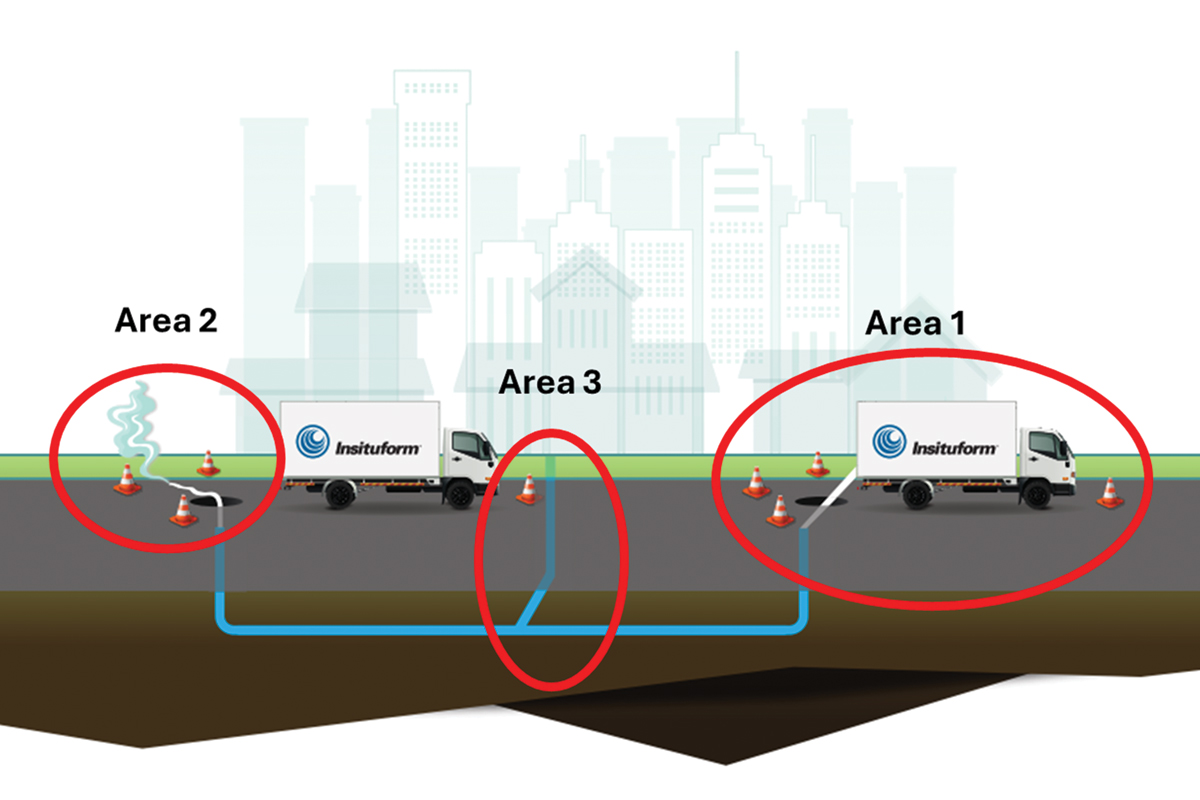Project of the Year – New Installation Runner Up
October 18, 2014
 Subcontractor Super Excavators Inc. (SEI) of Menomonee Falls, Wis., completed a 19-month project, which involved 11,976 lf of microtunnel work in historic Providence, R.I., in March 2014.
Subcontractor Super Excavators Inc. (SEI) of Menomonee Falls, Wis., completed a 19-month project, which involved 11,976 lf of microtunnel work in historic Providence, R.I., in March 2014.The Woonasquatucket Interceptor complements other infrastructure improvements, assisting in the separation of sanitary and storm water flows to eliminate pollution into the Woonasquatucket River, which flows to Narragansett Bay.
SEI is a predominant player in the microtunneling and pipe jacking industry. SEI mobilized a skilled microtunneling crew to Rhode Island, with an average crew size of 12 to 15 consisting of key personnel from its corporate headquarters and workers from the local labor unions. Combined, this team assumed single, double and three-shift scenarios to maintain the project schedule.
The entire City of Providence encompasses a total of 18.5 sq miles of land and is located at the tip of Narragansett Bay. The Woonasquatucket River, tributary of the Narragansett Bay, traverses 15.8 miles through Providence, and marks the location for the microtunneling work. Construction area for Phase II is located in the oldest parts of Providence, named the Federal Hill and Downtown regions. The streets are narrow, irregularly structured and surrounded by compact development. Proximity to buildings, erratic intersections and traffic constraints made detailed shaft planning a critical component to the microtunneling contractor’s success.
Estuary Narragansett Bay offers hundreds of miles of coastline to the City of Providence, features fresh and sea water and hosts a diverse ecosystem mix of species. Currently, 64 combined sewer systems in the surrounding districts are discharging pollutants into the Narragansett Bay and its tributaries to the tune of 2.2 billion gals each year during wet weather events that exceed the 100-plus-year-old infrastructure’s capacity.
After many years of studies, workshops and project assessments, the Narragansett Bay Commission (NBC) put forth the Combined Sewer Overflow (CSO) Abatement Program. This program satisfies the regulatory requirements for the Federal Clean Water Act, the Rhode Island Department for Environmental Management and long-term cleanup goals for Narragansett Bay, while offering the lowest operation, maintenance and construction costs.
The full scope of the three-phase CSO design includes the construction of six miles of 26-ft diameter underground storage tunnels, five CSO interceptors, a wastewater treatment facility and sewer separation in 12 regions. Phase I took place from June 2001-October 2008. Phase II began in July 2011 and is currently in process. Phase II, totaling $256 million, entails the construction of the Seekonk (7,200 lf) and Woonasquatucket (16,400 lf) CSO interceptors, two sewer separation projects and a wetland facility that will ease discharge from 17 current CSOs and a 1,800-ft connection adit to a Phase 1 tunnel. Construction on Phase II will continue through December 2014.
SEI began work on the project in September 2012 and completed 22 total runs in March 2014. These conduits along the interceptor included: 618 ft of 30-in. RCP in two drives; 149 lf of 36-in. HOBAS pipe in one drive; 4,423 lf of 48-in. RCP in seven drives; 743 lf of 54-in. RCP in two drives; 2,063 lf of 60-in. RCP in four drives; and 3,980 lf of 72-in. RCP in six drives.
Seventeen of the shafts were constructed using interlocked steel sheeting and concrete whalers. Two shafts, plus one more located along a sluice gate and screening structure, were constructed using interlocked steel sheeting and steel beam whalers. Two shafts were created using secant piles in geology with saturated bedrock. Due to the unexpected behavior of the challenging geographic profile, additional work was added to the contract for the installation of jet grouted support for the MTBM as it entered and exited these shafts. Shaft depths varied from 21to 42 ft deep, with an average vertical depth of 30 ft.
The project is significant for the total of amount of microtunnel footage installed. The subcontractor installed this footage amid tight work easements in historic Providence, requiring careful staging of pipe and equipment during each drive. At a few of the locations, the separation plant had to be set up at a remote location so there was enough room to handle the spoils.
The biggest challenges posed on the project were associated with unstable soils and excessive water pressure, causing the contractor to make frequent adjustments to the equipment spreads, ground improvement plans, and schedules. The high-water table presented a lot of water pressure and sometimes made for difficult launch and retrieval of the MTBM.
This project required a proficient microtunneling crew in order to overcome adversity. The subcontractor was able to adapt to the challenges, implement solutions while maintaining the project schedule.




